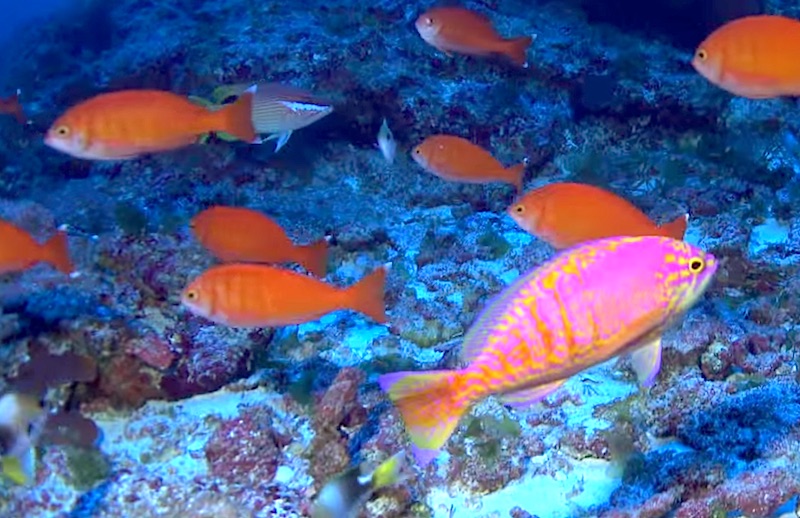Hawaii is renowned for its endemism which extends from the land down to the deep reefs. It’s been a while since we’ve posted a really good dive video featuring some rare fish so you can be certain that this one from an exotic location of Hawaii is really really good.
Shot by the Association for Marine Exploration this new video was taken at Kure, the ‘last’ island of the Northwestern Hawaiian Islands and the Papahanahmokuakea Marine National Monument. At this high latitude the water temperature is much cooler and it is therefore possible to encounter species of deep reef fish at much shallower depths.

These two videos of diving in Kure are a veritable roll-call of deep-dwelling, exciting Hawaiian endemic reef fish. Within a single one minute clip you can spot three species of hogfish including Bodianus sanguineus, Bodianus albotaeniatus, and Bodianus bathycapros, the inimitable masked angelfish Genicanthus personatus, the showy Odontanthias fuscipinnis and more.
Two other lesser known species in the marine aquarium hobby that are well illustrated in the videos include Caprodon unicolor, represented by a single super-colored male and a harem of females, as well as the darling damselfish Chromis struhsakeri. We’ve never seen a Caprodon in a captive aquarium before but the adult male coloration of C. unicolor blows away the appearance of nearly all other large anthias species.

Practically the only species missing from the videos of these Hawaiian endemic reef fish are bandit angelfish, orange margin butterflyfish and Roa excelsa. These short 1-minute video surveys of so many endemic reef fish just goes to show you that most fish are only rare on the margins of their natural range distributions.
If you want to truly take advantage of the visual checklist of these Hawaiian endemic reef fish, do yourself a favor and in the settings icon of the YouTube video player, go ahead and set the play speed to 50% or 25% so you can watch these exotic reef fish swim by in glorious slow motion.



